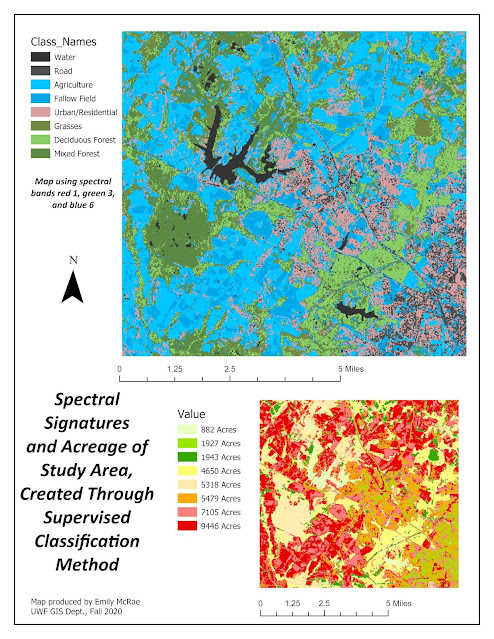GIS 6005 - Lab 6 - Relationship Between Obesity & Inactivity, US Counties
This is an example of a bivariate choropleth map. There are two variables being shown here using a color scheme that fades across two color spectrums. The variables are percent obesity and percent inactivity, by US County.
To prepare data for mapping in a bivariate map, you must be able to show a relationship between the variables. To do this in ArcGIS Pro at this time, there is a bit of manual work to be done, so you can follow the steps below to prepare your data set.
1. Establish your class breaks for each of your two variables. Decide what type of breaks you will use (natural, quantile, equal interval, etc.). Establish class breaks through either manual calculations, or by setting your map display and recording the class breaks that are automatically set.
2. Add three columns in your data set; a column to flag which class your values for the first variable will be in, a column to flag which class your values for your second variable will be in, and a column that concatenates the two.
3. Calculate your two flag columns using selections to identify your values for each class within each variable. You can use SQL expressions for this.
4. Concatenate your two flag columns into one. You can use SQL expressions for this.
Now you have a ready column to display and can begin with your symbology.
To prepare data for mapping in a bivariate map, you must be able to show a relationship between the variables. To do this in ArcGIS Pro at this time, there is a bit of manual work to be done, so you can follow the steps below to prepare your data set.
1. Establish your class breaks for each of your two variables. Decide what type of breaks you will use (natural, quantile, equal interval, etc.). Establish class breaks through either manual calculations, or by setting your map display and recording the class breaks that are automatically set.
2. Add three columns in your data set; a column to flag which class your values for the first variable will be in, a column to flag which class your values for your second variable will be in, and a column that concatenates the two.
3. Calculate your two flag columns using selections to identify your values for each class within each variable. You can use SQL expressions for this.
4. Concatenate your two flag columns into one. You can use SQL expressions for this.
Now you have a ready column to display and can begin with your symbology.




Comments
Post a Comment